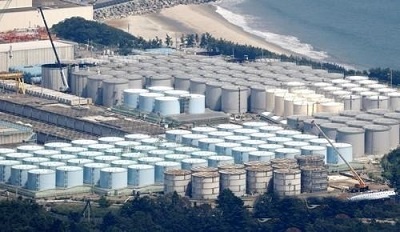Tokyo, (Asian independent) Japan began the second phase of the discharge of treated wastewater from its crippled Fukushima nuclear power plant into the Pacific Ocean on Thursday, after the first phase was carried out within the established safety limits between August 24 and September 11.
The second phase of the discharge kicked off around 10.30 a.m. (local time) and is scheduled to continue through October 23, estimating the total discharge amount at 7,800 tonnes, almost the same amount as that of the first period, Yonhap News Agency quoted Japanese media reports as saying.
The daily discharge is expected to be 460 tonnes.
Tokyo Electric Power Co., the plant’s operator, plans to release the water, stored in tanks after being treated through a custom purification system known as the Advanced Liquid Processing System (ALPS) since its meltdown in March 2011, through a sea tunnel extending 1 km into the ocean.
ALPS can remove 62 kinds of radioactive substances, except tritium, which can be reduced to the international safety level through dilution with seawater.
The Japanese government, the Fukushima prefectural government and Tokyo Electric have regularly analysed the concentration of tritium in seawater and fish around the nuclear power plant since the beginning of the first discharge and reported no abnormalities.
On Wednesday, Tokyo Electric again measured the concentration of tritium in the treated and diluted wastewater and found it was up to 87 becquerels per litre, which was lower than the discharge standard.
More than a million tonnes of water stored at the nuclear plant will be discharged over the next 30 years.
Hit by the magnitude-9.0 earthquake and an ensuing tsunami on March 11, 2011, the Fukushima plant suffered core meltdowns that released radiation, resulting in a level-7 nuclear accident, the highest on the International Nuclear and Radiological Event Scale.
The plant has been generating a massive amount of water tainted with radioactive substances from cooling down the nuclear fuel in the reactor buildings, which are now being stored in about 1,000 storage tanks.








